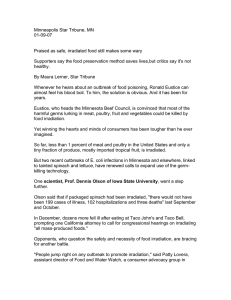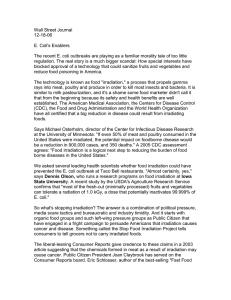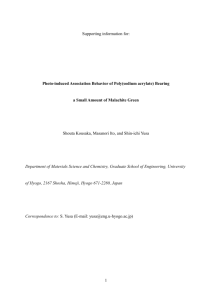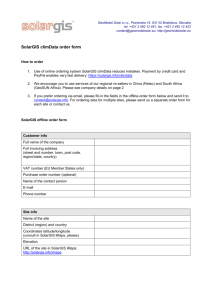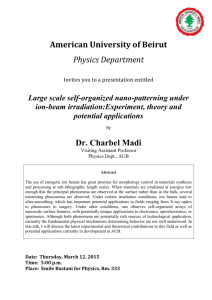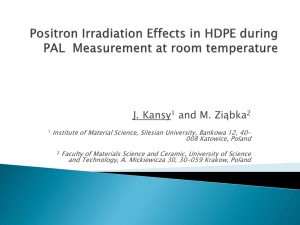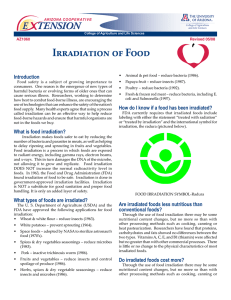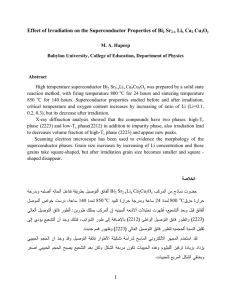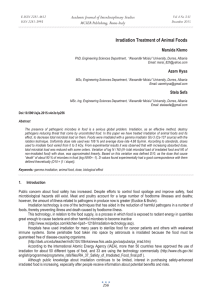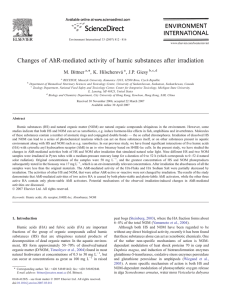Farm News 10-20-06 Produce recall raises food safety questions
advertisement
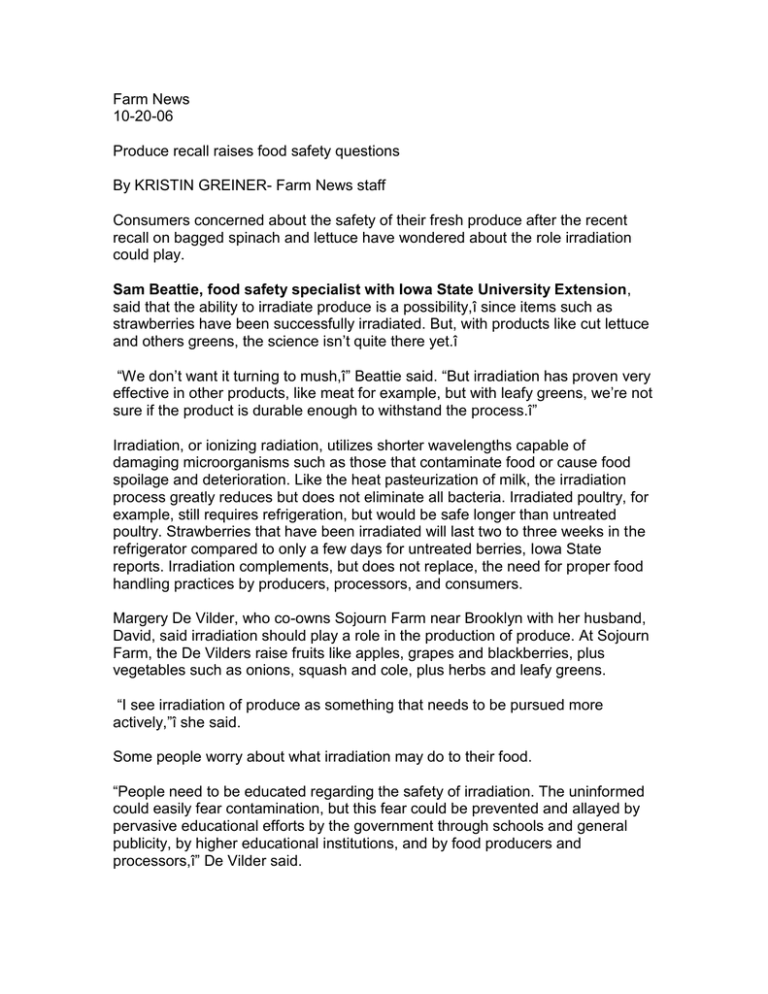
Farm News 10-20-06 Produce recall raises food safety questions By KRISTIN GREINER- Farm News staff Consumers concerned about the safety of their fresh produce after the recent recall on bagged spinach and lettuce have wondered about the role irradiation could play. Sam Beattie, food safety specialist with Iowa State University Extension, said that the ability to irradiate produce is a possibility,î since items such as strawberries have been successfully irradiated. But, with products like cut lettuce and others greens, the science isn’t quite there yet.î “We don’t want it turning to mush,î” Beattie said. “But irradiation has proven very effective in other products, like meat for example, but with leafy greens, we’re not sure if the product is durable enough to withstand the process.î” Irradiation, or ionizing radiation, utilizes shorter wavelengths capable of damaging microorganisms such as those that contaminate food or cause food spoilage and deterioration. Like the heat pasteurization of milk, the irradiation process greatly reduces but does not eliminate all bacteria. Irradiated poultry, for example, still requires refrigeration, but would be safe longer than untreated poultry. Strawberries that have been irradiated will last two to three weeks in the refrigerator compared to only a few days for untreated berries, Iowa State reports. Irradiation complements, but does not replace, the need for proper food handling practices by producers, processors, and consumers. Margery De Vilder, who co-owns Sojourn Farm near Brooklyn with her husband, David, said irradiation should play a role in the production of produce. At Sojourn Farm, the De Vilders raise fruits like apples, grapes and blackberries, plus vegetables such as onions, squash and cole, plus herbs and leafy greens. “I see irradiation of produce as something that needs to be pursued more actively,”î she said. Some people worry about what irradiation may do to their food. “People need to be educated regarding the safety of irradiation. The uninformed could easily fear contamination, but this fear could be prevented and allayed by pervasive educational efforts by the government through schools and general publicity, by higher educational institutions, and by food producers and processors,î” De Vilder said. Food irradiation is known as a cold process that does not significantly increase the temperature or change the physical or sensory characteristics of most foods. An irradiated apple, for example, will still be crisp and juicy. Fresh or frozen meat can be irradiated without cooking it, Iowa State reports. During irradiation, the energy waves affect unwanted organisms, but are not retained in the food. Similarly, food cooked in a microwave oven, or teeth and bones that have been X-rayed, do not retain those energy waves. Beattie said growers know how to prevent contamination, which is critical, because once produce is contaminated, it is very difficultî to remove the microorganisms. “Growers need to practice good ag practices,”î he said. “We have a protocol called GAPS that calls for making sure irrigation water has not been contaminated with fecal matter from runoff or animal sources, and to try to prevent animals and wildlife from entering the field. We also focus on employeeworker hygiene, particularly handwashing and avoiding contamination that comes from fecal material on the hands.î” On the opposite end of the spectrum, there isn’t much consumers can do with some contaminated produce, other than tossing it out. “Washing bagged lettuce or leafy greens won’t do a thing,”î Beattie said. “Consumers still should practice all of the good food safety practices, such as avoidance of cross contamination, cleaning their hands and cooking surfaces, plus cooking food to a proper internal temperature.”î Beattie did point out that consumers can safeguard themselves by paying attention to what’s called temperature abuseî of produce at the grocery store level. “Moist lettuce and cut vegetables are more likely to support the growth of harmful microorganisms if they’ve been temperature abused,”î he said. “Look at the condition of bagged lettuce, is it green or is it wilted with brown leaves and a lot of moisture in the bag? If the latter is the case, then it’s probably been temperature abused. Look for the driest produce out there and choose the freshest cut date.î” At home, Beattie said consumers should only remove the amount of produce they need for a meal and to leave the remainder in the bag or container without washing it. “This won’t necessarily help with products that have already been contaminated, but if you prevent it from warming up, it will keep the number of organisms down,î” he said.

